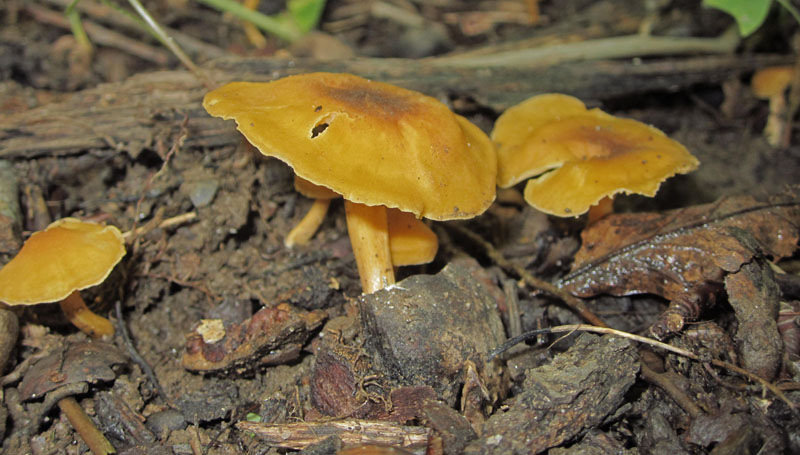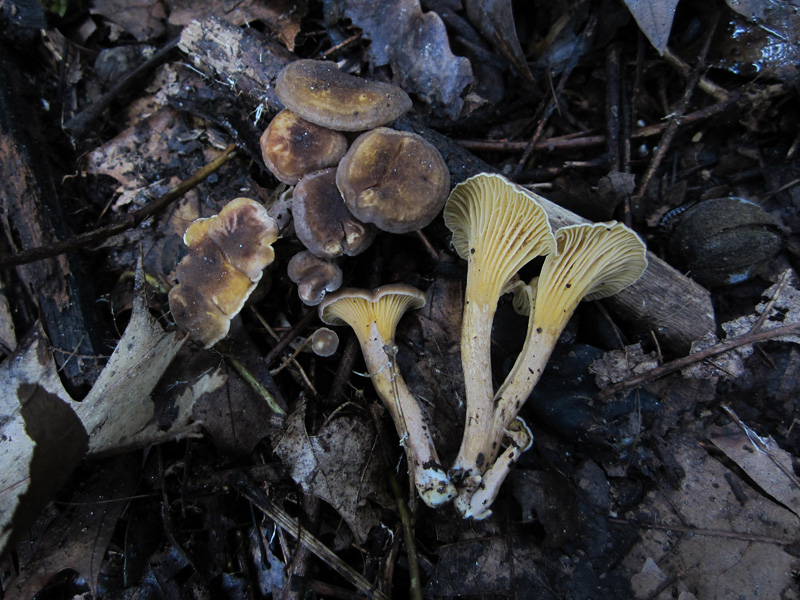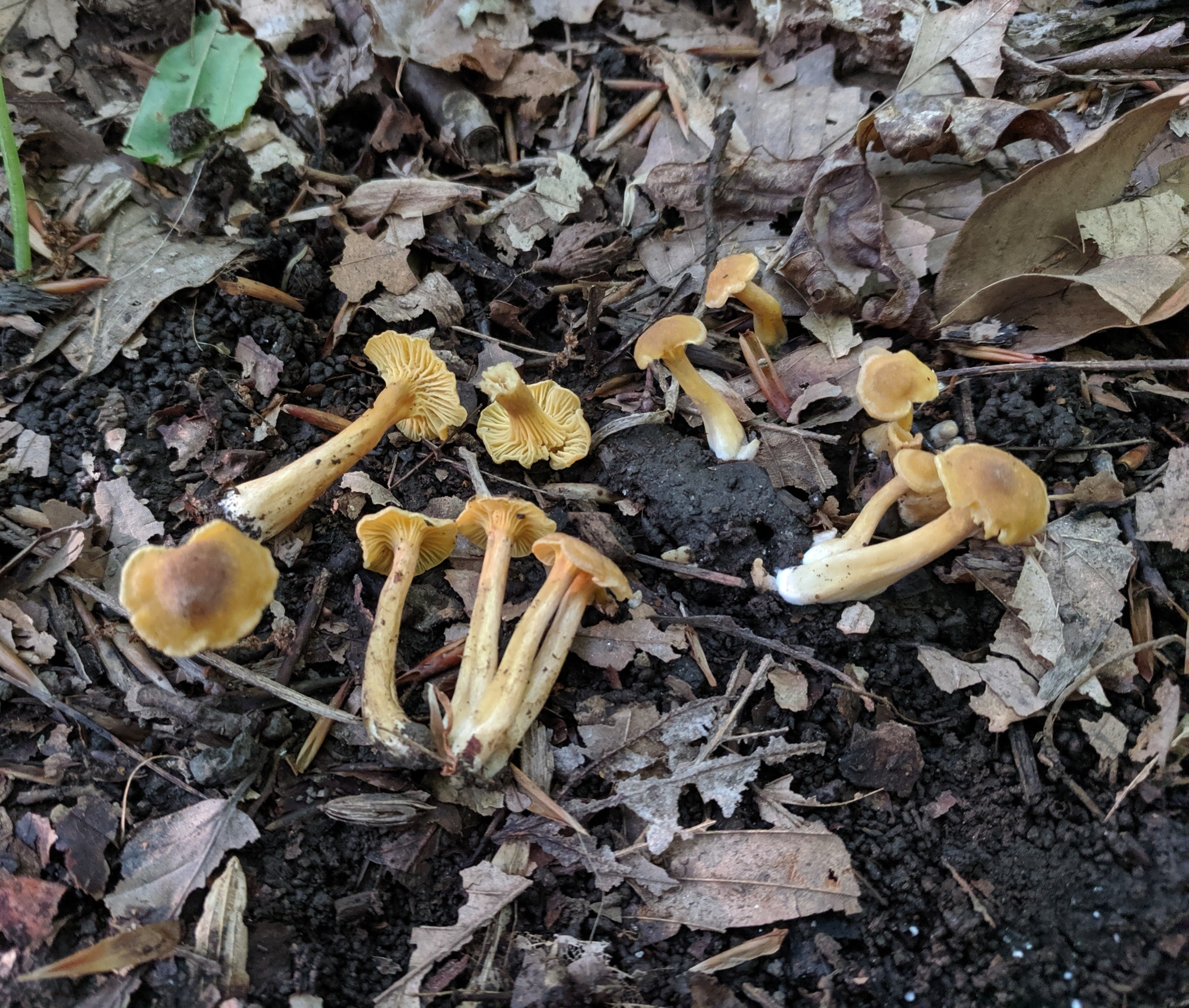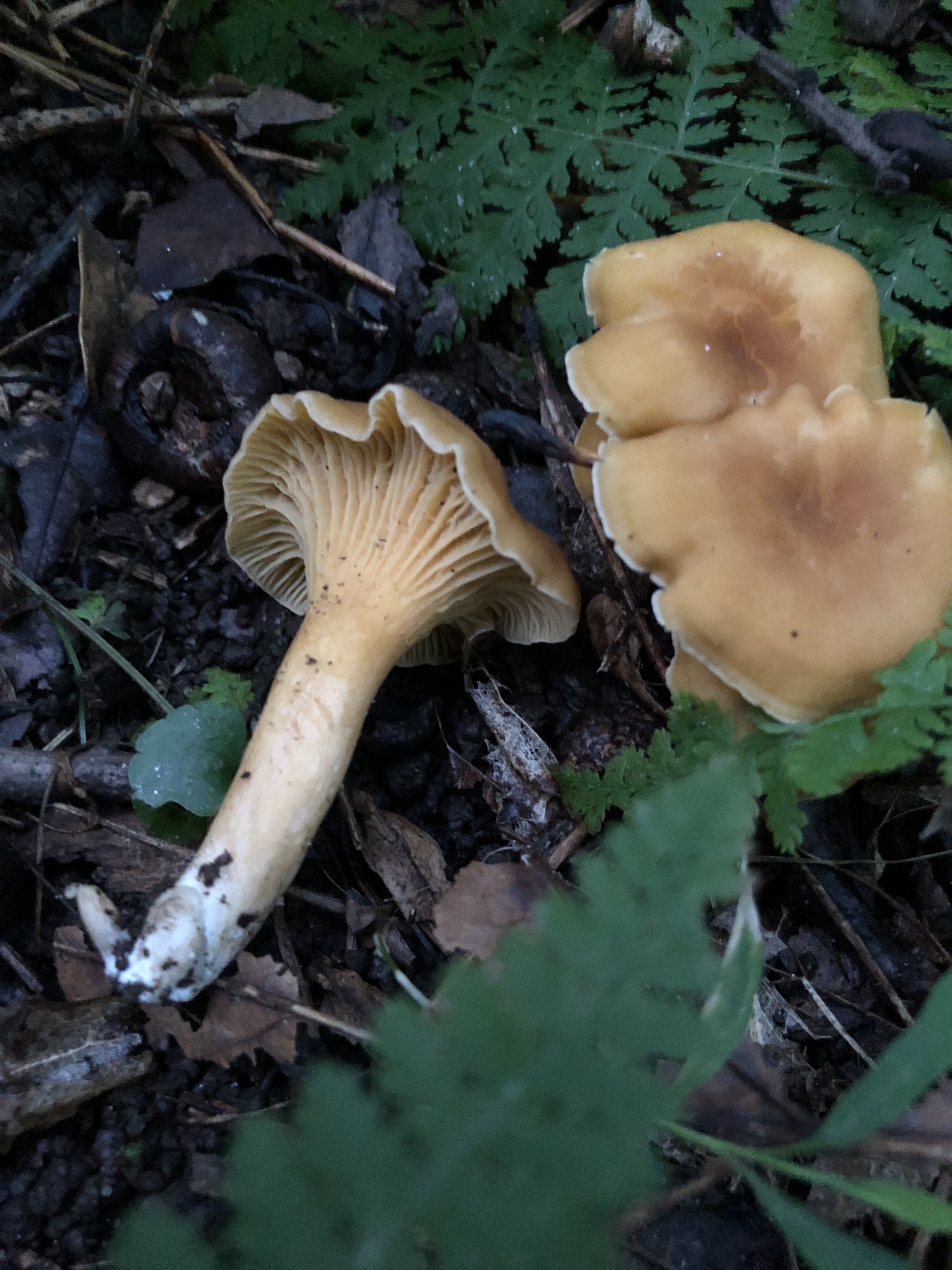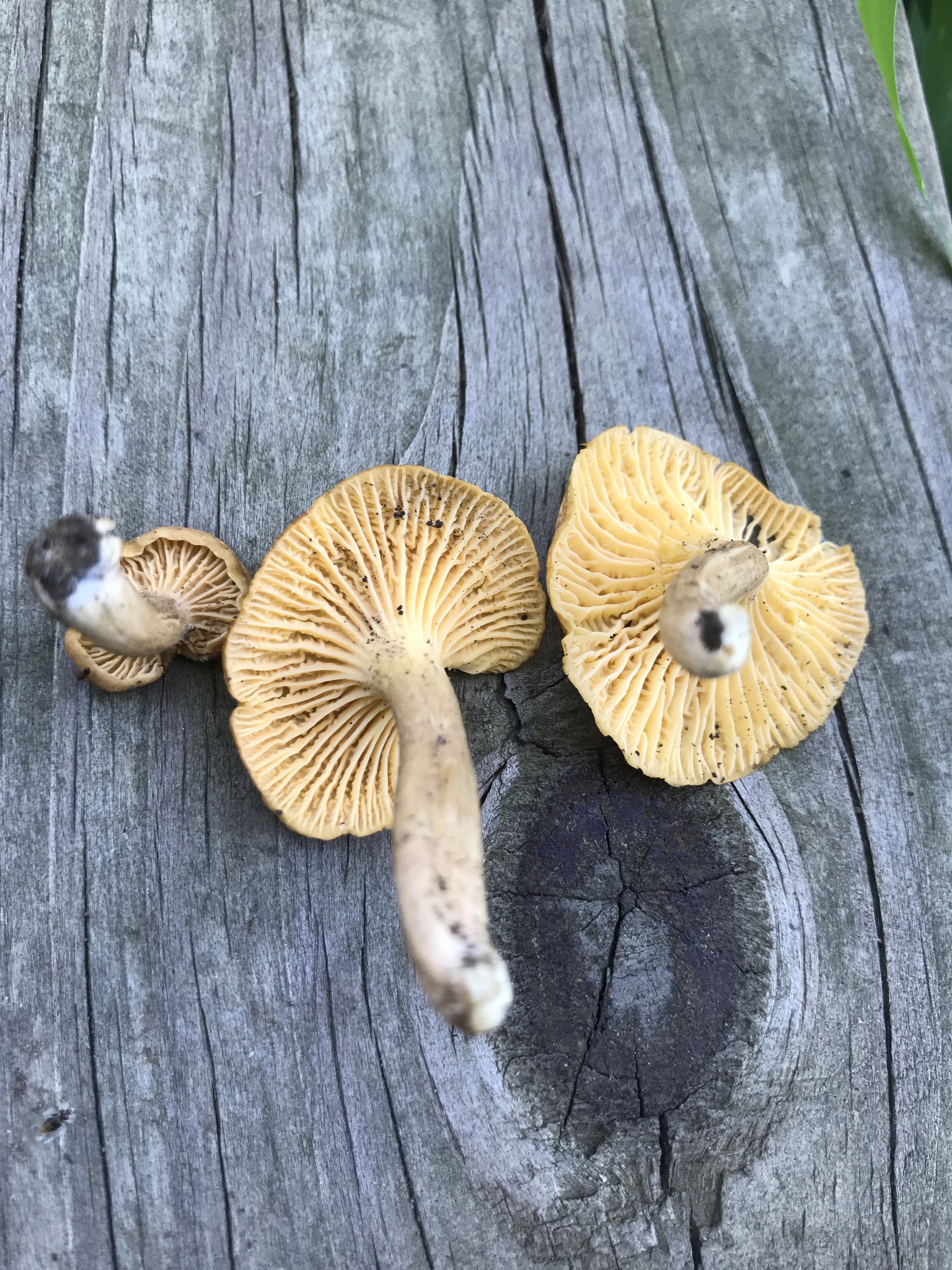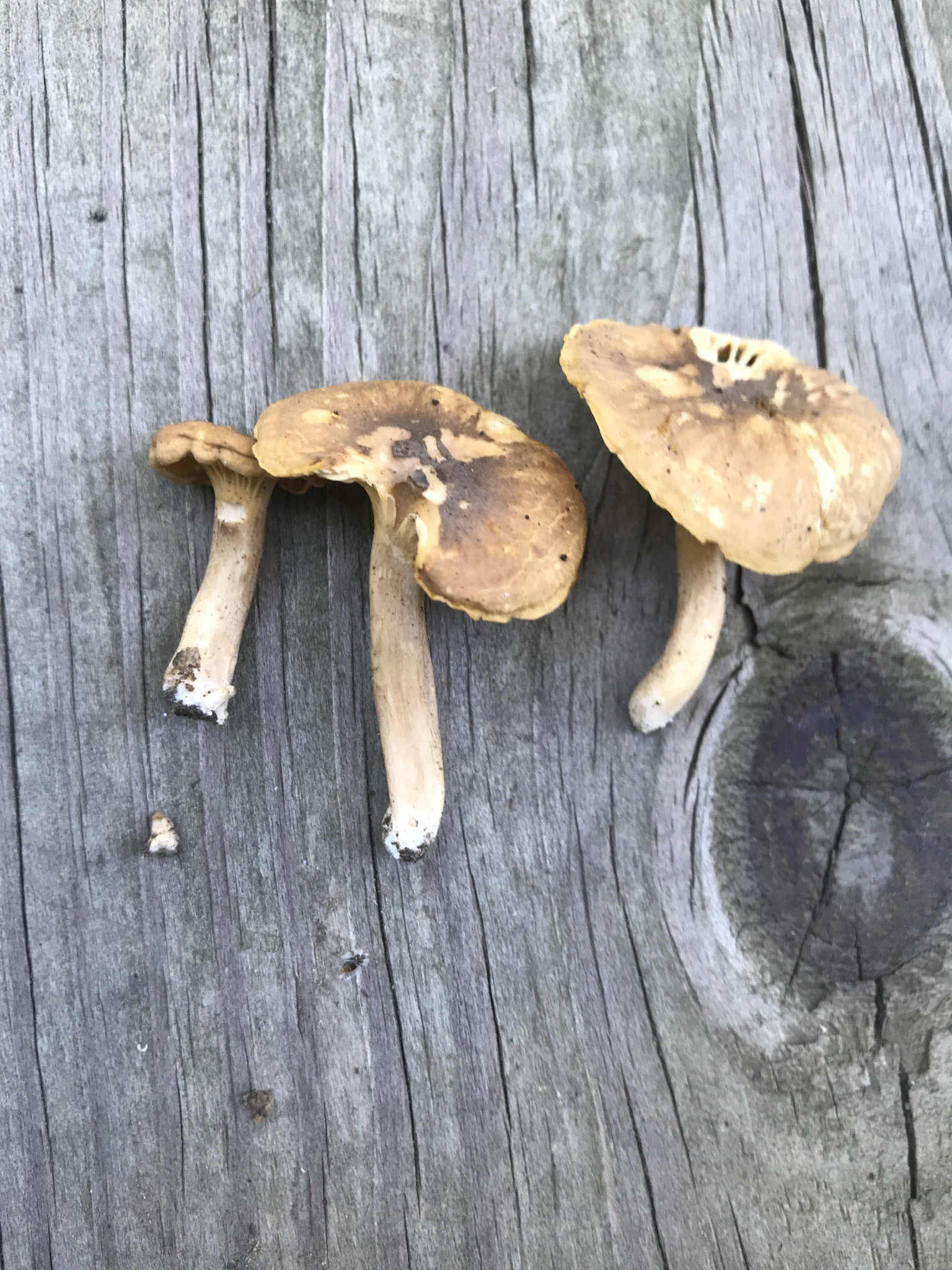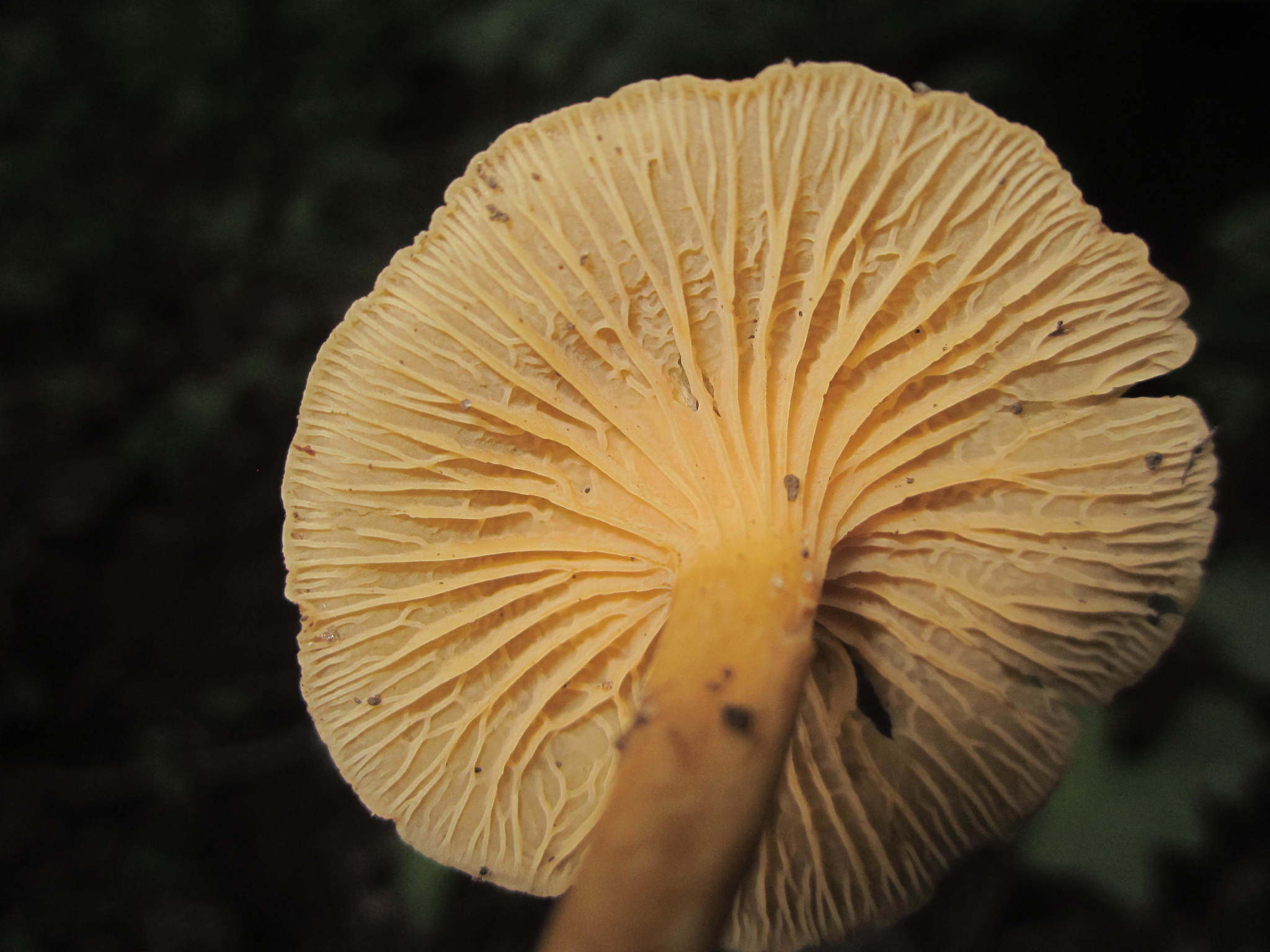Map Snapshot




26 Records
Description
Cap: Pale to dark yellow-brown, dark brown spot in center; convex to plane/depressed in age; margin incurved, elevated/wavy in age. Fertile surface: Decurrent false gills with forked, blunt ridges, may have crossveins. Stalk: Pale yellow-brown to yellow-orange; smooth; hollow in age (J. Solem, pers. comm.).
Where To Find
Solitary, scattered groups; on ground in mixed or deciduous woods (J. Solem, pers. comm.).
Seasonality Snapshot
Source: Wikipedia
| Cantharellus appalachiensis | |
|---|---|

| |
| Scientific classification | |
| Domain: | Eukaryota |
| Kingdom: | Fungi |
| Division: | Basidiomycota |
| Class: | Agaricomycetes |
| Order: | Cantharellales |
| Family: | Cantharellaceae |
| Genus: | Cantharellus |
| Species: | C. appalachiensis
|
| Binomial name | |
| Cantharellus appalachiensis R.H. Petersen 1971
| |
| Cantharellus appalachiensis | |
|---|---|
| Ridges on hymenium | |
| Cap is infundibuliform | |
| Hymenium is decurrent | |
| Stipe is bare | |
| Spore print is buff | |
| Ecology is mycorrhizal | |
| Edibility is choice | |
Cantharellus appalachiensis is a fungus native to eastern North America in the genus Cantharellus, which includes other popular edible chanterelles. The cap color varies from brown to yellow, often with a brown spot on the cap at maturity. C. appalachiensis is mycorrhizal and is found in hardwood forests.[1] The scientific name C. appalachiensis is after the Appalachian Mountains.
References
[edit]- ^ Kuo, M. (Feb 2006). "Cantharellus appalachiensis". MushroomExpert.Com. Retrieved 2011-03-25.
